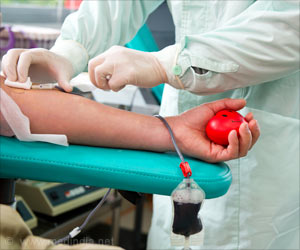[ad_1]
Yet if the FDA rules on blood donation are analyzed, they
happen to have a very wide margins of error. For example, it bars anyone who
has traveled in areas where malaria is prevalent from donating blood for a
year, even though malarial symptoms such as chills and fever are almost
unmistakable and virtually always appears within 40 days. The agency also has a
12-month waiting period
for heterosexuals who, among other activities, have had sex with prostitutes or
with drug addicts.
On the agency keeping the one-year ban on men who had sex in
the last 12 months, FDA commented that it was keeping the 12-month ban because
“compelling scientific evidence is not available at this time to support a
change to a deferral period less than one year while still ensuring the safety
of the blood supply.” This new step by the FDA makes the United States on par
with many European countries, including Britain, which adjusted its lifetime
ban in favor of a 12-month restriction in 2011.
The health advocates involved mentioned that the move was a
long overdue one and said that the ban represented a stigma about gay men being
a risk to the health of the nation and was not based on the latest scientific
discoveries. Legal experts said the change brought an important national health
policy in line with other legal and political rights for gay Americans, like
permitting gay people to marry and to serve openly in the military. I. Glenn
Cohen, a law professor at Harvard who specializes in bioethics and health says
that, “This is a major victory for gay civil rights. We’re leaving behind the
old view that every gay man is a potential infection source.” He also mentioned
that the policy was “still not rational enough.”
Also few other advocacy groups feel that by keeping the
12-month ban, blocking any gay or bisexual man who is sexually active from
donating, the agency has erased about half the population of potential donors.
The ban seems especially ridiculous as the doctors, at present have nucleic
acid tests that can diagnose an HIV infection within nine to 11 days of
exposure and all blood donations have to be tested before being shipped for
transfusion.
On this the director of special donor services at the New
York Blood Center said Debra Kessler that, “Many other Western countries had
changed their policies, and I think the FDA has come to accept the science
supporting a change to their policy also.” She added that blood centers across
the country “have been talking to the FDA for years to encourage them to move
forward.”
An FDA spokesperson said that the agency had “carefully examined
and considered the scientific evidence” and that it intended to issue a draft
guidance detailing the change in 2015. The person also mentioned that there was
not enough science to support lifting the 12-month ban. “At this time we simply
do not have the evidence to suggest that we can go to a shorter period,” said
Dr. Peter Marks, deputy director of the FDA’s Center for Biologics Evaluation
and Research. Dr. Marks also mentioned that similar policy changes in countries
as Australia, where studies have shown no increased risk to the blood supply
after the country changed the ban from lifetime to a year, guided the FDA to
make the decision.
This move by the agency was appreciated by many groups,
stating that many medical experts, blood banks and gay men’s health
organizations have been working hard in pushing the policy had long outlived
its usefulness for safety in the blood supply. Sean Cahill, the director of
health policy research at the Fenway Institute, a research and advocacy center
in Boston says that, “A lot has changed since 1983.” He called the shift “an
important incremental step toward a better policy. That’s how policies often
change incrementally.”
According to the Williams Institute at the University of
California, Los Angeles, about 8.5 percent or about 10 million of American men
report having had sex at least once with a man since turning 18. The institute
has calculated that the new removal of the long-standing ban can increase the
available blood by 2-4 percent and add about 317,000 pints of blood to the
nation’s supply annually. The new policy will exclude the 3.8 percent of
American men who report having a male sexual partner in the past year, a group
that could double the potential new supply. The policy comes at a time when the
nation’s blood supply is relatively stable, in part because of changes in
hospitals and ways of collecting blood.
The ban on gay men who had sex in the last 12-month from
donating blood, according to many rights group is unfair because it blocks a
sexually active gay man from donating even if he has had only one sexual
partner, has protected sex and has not been exposed to any infection, while it
allows sexually active heterosexual men and women who may have been exposed to
HIV to donate. They also argue that the lifetime ban still stigmatizes gay men
and their homosexuality, making it seem like being gay is a risk in itself.
They say the policy, like that of Italy’s, should be more individualized, where
the potential donors are interviewed to screen for higher-risk donors, like
people with multiple sexual partners or who report sex with intravenous drug
users or prostitutes.
In a statement, Dr. Marks said a surveillance system is
being put in place by the agency to help in monitoring the effect of the policy
change.
Source: Medindia

